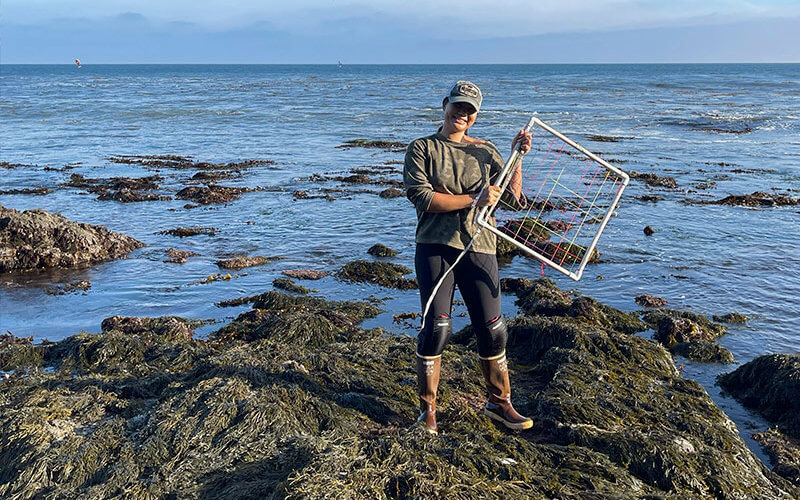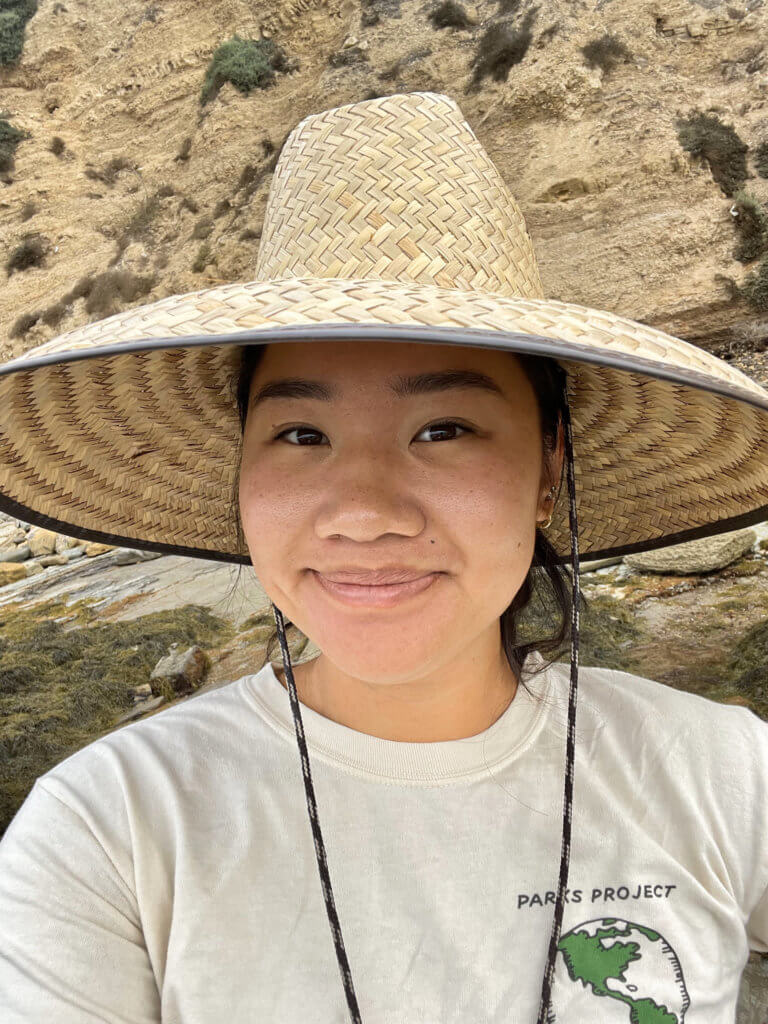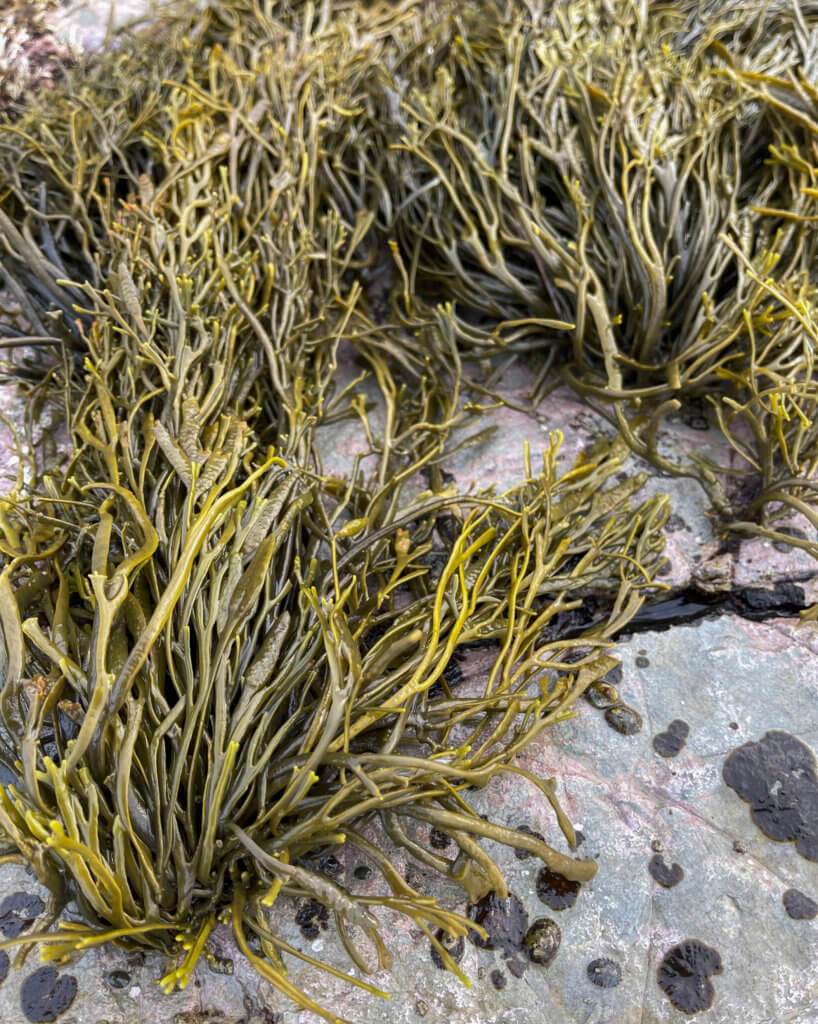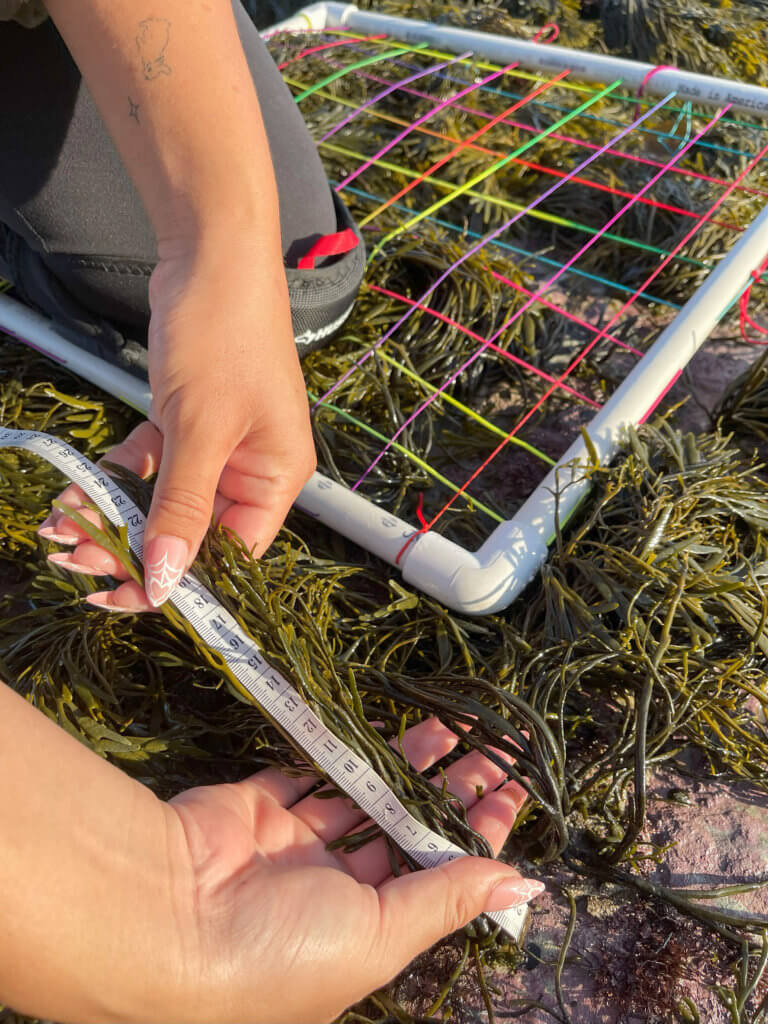
Cal State Fullerton biology graduate student Megan Nguyen is studying the impact of human activities and environmental stressors on seaweed in Southern California’s rocky intertidal habitat.
After she completes the master’s program in May, Nguyen will apply her research skills in marine biology and knowledge about rocky intertidal ecosystems to study the California Delta as a 2024 California Sea Grant State Fellow.
Nguyen has been awarded a 12-month, paid California Sea Grant State Fellowship for graduate students. The educational fellowship offers hands-on training at a municipal, state or federal agency in California related to marine, coastal and watershed resources and the decisions affecting those resources in the state.

“This is a new opportunity for me that provides a deep dive into the intersection of science funding, science communication, environmental justice and natural resource management in the Delta, the hub of the state’s water supply,” she said.
During her yearlong fellowship, Nguyen will work on projects in a multifaceted role that connects research, policy and inclusivity.
“My interest in the fellowship stems from my desire to advance professionally at the state level, gain a deep understanding of California’s ocean and coastal management priorities, and expand my network with environmental agencies and stakeholders,” she shared.
A first-generation Vietnamese American, Nguyen’s motivation and passion for pursuing a career in coastal science and policy stems from her family who relied on fishing and other marine resources to establish a new life in the U.S. following the Vietnam War.
Nguyen ’19 (B.S. biological science-marine biology) became involved with CSUF’s chapter of the Society for Advancement of Chicanos/Hispanics & Native Americans in Science as an undergraduate and served as president and vice president in graduate school. She will build on these experiences to bring advocacy, leadership and diverse perspectives to her fellowship.

“As a woman and queer Vietnamese American graduate student, I rarely saw professionals who looked like me,” said Nguyen, who worked as a tidepool educator in Laguna Beach.
“I fell easily into imposter syndrome and lacked confidence. However, Dr. Jennifer Burnaford created a safe and diverse space in her lab where I finally felt seen and heard as a scientist.”
Alongside Burnaford, professor of biological science and her thesis adviser, Nguyen is investigating a seaweed called Silvetia compressa. Known as golden rockweed, it is an olive-brown alga facing decline due to climate change and human disturbance.
Nguyen is studying how human disturbance can harm this canopy-forming seaweed. The seaweed grows on rocks and creates a moist microhabitat that provides protection and shade and serves as a food source for marine animals.
In the intertidal zone — the shoreline area between high and low tide — organisms are exposed to air during low tide and covered by water during high tide.

“When people step on the rocky shore, it can cause problems for seaweed that grows there,” said Nguyen, who conducted field and lab experiments. “Seaweeds, especially the large ones that create a canopy, can get damaged or even completely removed when people walk on it during low tides.”
Her study showed that trampling over time by people had pronounced effects on canopy cover. At her study area in San Pedro, trampled plots lost more than 70% of canopy cover, while plots not trampled lost less than 10% of canopy cover over the course of her study.
Nguyen’s research fills in the gaps and helps scientists understand how disturbances like people walking on the rocky shore and seaweed drying out can indirectly and directly damage the seaweed and its rocky intertidal ecosystem.
“Understanding the impact of human activities on canopy-forming seaweeds provides insights into broader ecosystem health,” she said. “Changes in the behavior or abundance can have cascading effects on biodiversity, species interactions and overall ecosystem functioning.”